Scarf Series
Each pen plot is unique, generated from custom code that draws inspiration from a folded, patterned scarf. Each piece is original and will only be printed a single time. Many of these 11×17″ pieces take many hours to print due to the complex, intricate lines and the slow deliberate movement of the HP7475 plotter.
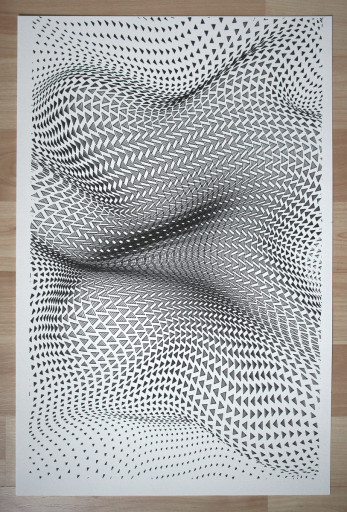
“Scarf Series: Number 5” 11 x 17 in.
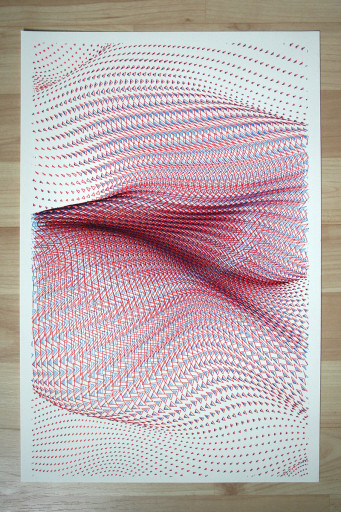
“Scarf Series: Number 6” 11 x 17 in.
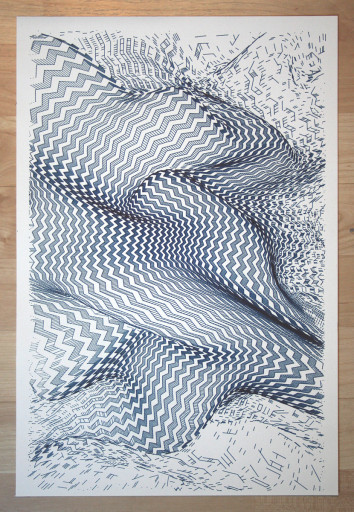
“Scarf Series: Number 7” 11 x 17 in.
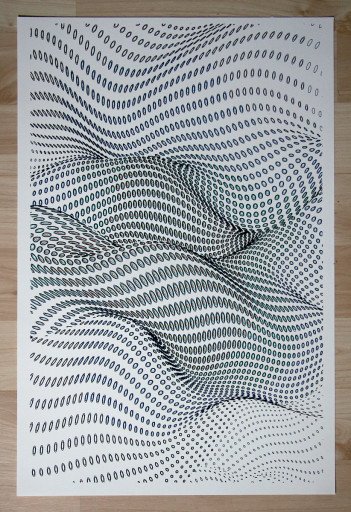
“Scarf Series: Number 8” 11 x 17 in.
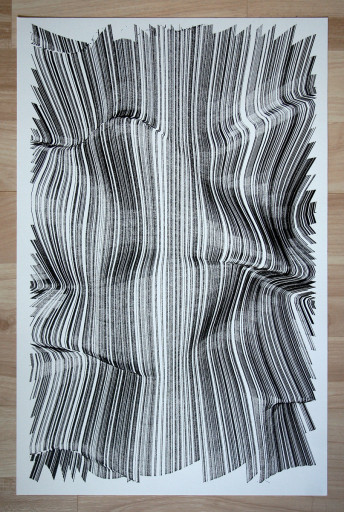
“Scarf Series: Number 11” 11 x 17 in.
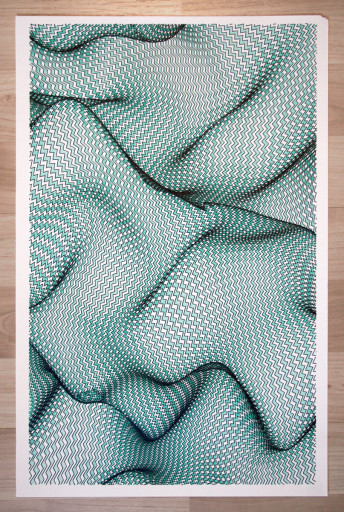
“Scarf Series: Number 12” 11 x 17 in.
Stacks Series
Original algorithmic artworks generated from custom code that draw inspiration from a stack of books. Color is added by hand using water color.
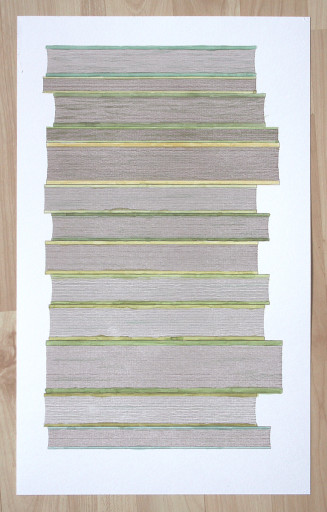
“1468020948” 11 x 17 in.
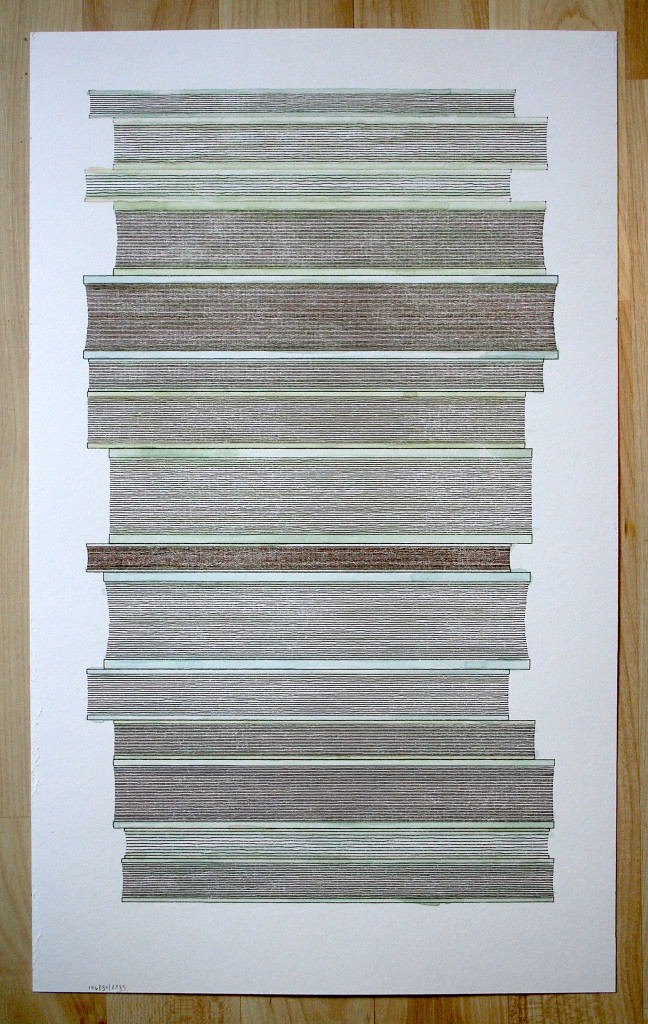
“1468342185” 11 x 17 in.
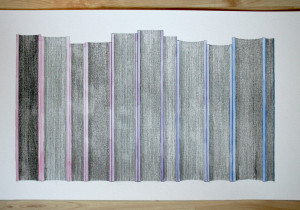
“1468278549” 17 x 11 in.
Bruce
Bruce is a portrait that marries algorithmically generated content with hand made strokes. Created using custom beard and braid generation applications that drive the HP7475 pen plotter mixed with hand drawn pen marks and watercolor. More information about the process available in this process breakdown post.
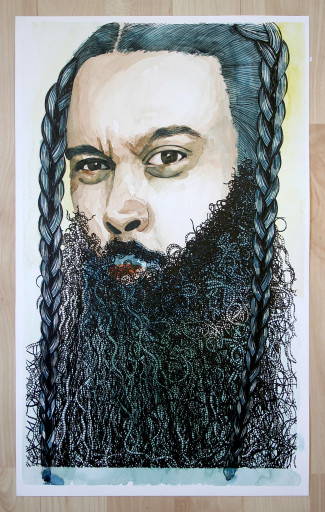
“Bruce” 11 x 17 in.
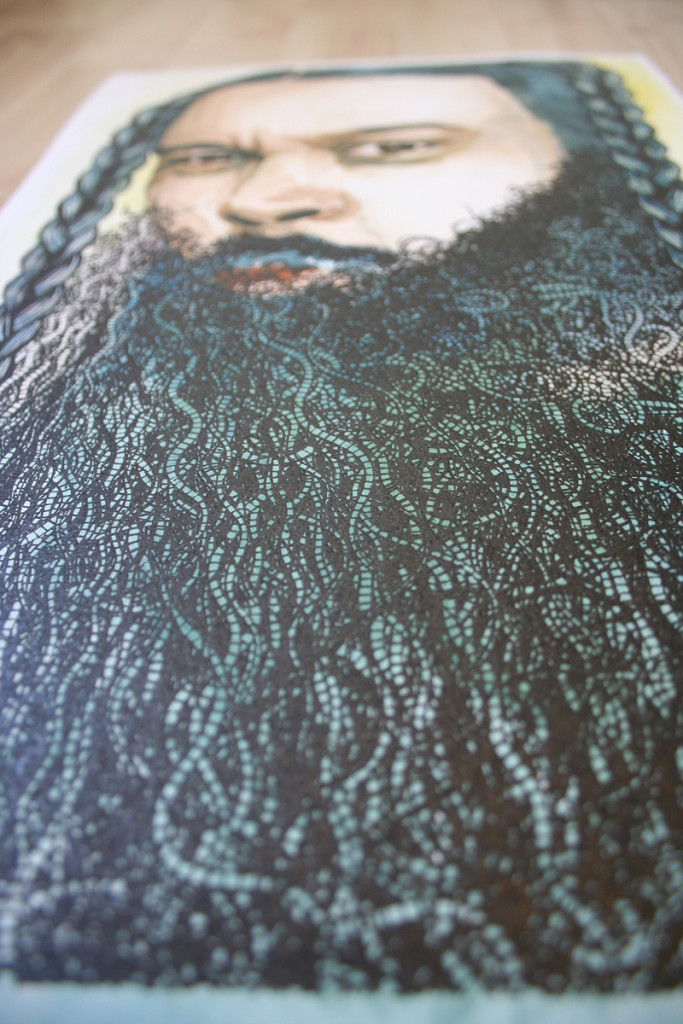
Barracuda
A combination of hand and machine made marks driven by custom software. Pen lines created using the HP7475 pen plotter.
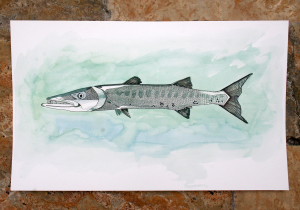
“Barracuda” 11 x 17 in.

Squids
Squids are created using a custom squid generator application I wrote in OpenFrameworks. Each squid is randomly generated and therefore unique. Squids are printed on a pen plotter and then water colored by hand. More information about the process in this post.
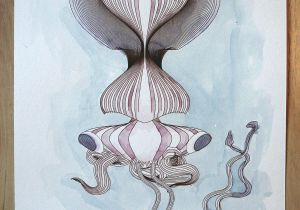
“Genevieve” 8.5 x 11.5 in.
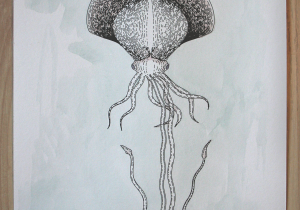
“Lucas” 9 x 11.5 in.
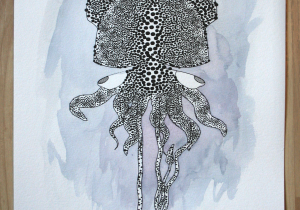
“Harold” 9 x 11.5 in.
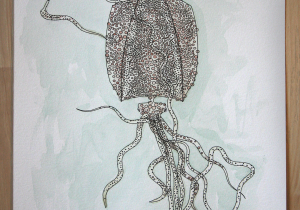
“Paola” 9 x 11.5 in.
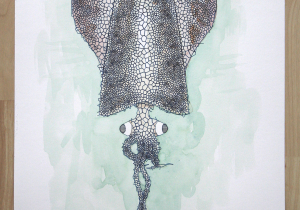
“Valeria” 11 x 18 in.
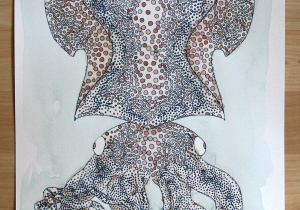
“Alfredo” 11 x 18 in.
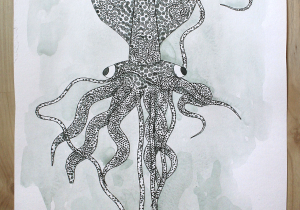
“Damarion” 11.5 x 18 in.
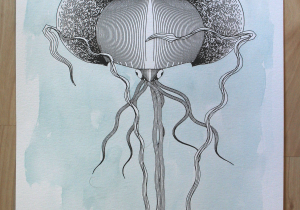
“Dede” 9 x 11.5 in.
Peacock
Peacocks are created using a custom peacock generator application written in OpenFrameworks. Each peacock is programmatically generated, and therefore unique. Peacocks are printed on a HP7475 pen plotter and then water colored by hand. Each peacock is a triptych, composed of three 11 x 17″ pieces to compose the complete work. More information about the process in this post.
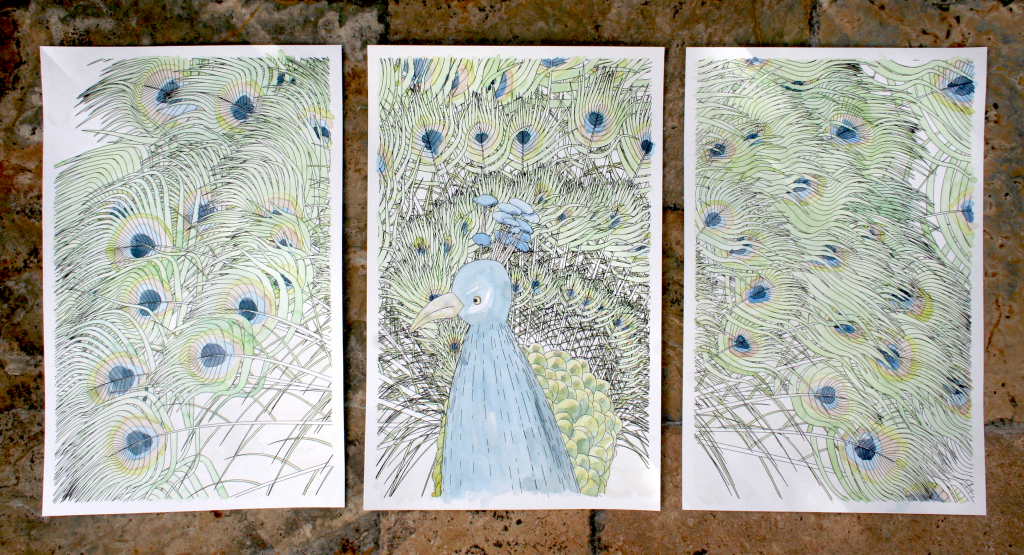
“Franklin” Triptych: three 11 x 17 in. pieces.
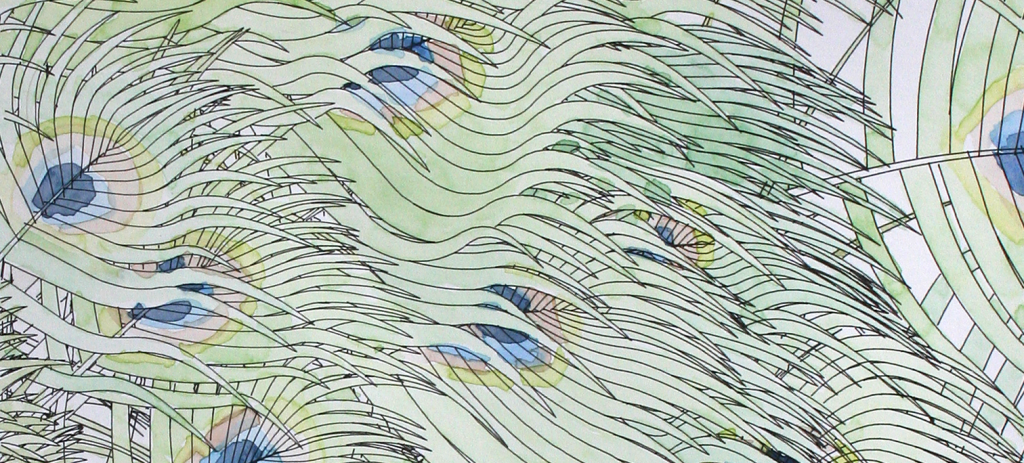
Squids are created using a custom squid generator application I wrote in OpenFrameworks. Each squid is randomly generated, and therefore unique. Squids are printed on a pen plotter and then water colored by hand. Below is the process for creating “Damarion.” More pen plotter pieces are viewable in Drawing Machine.
The output printed on the pen plotter and then water colored by hand, yielding the finished result below:
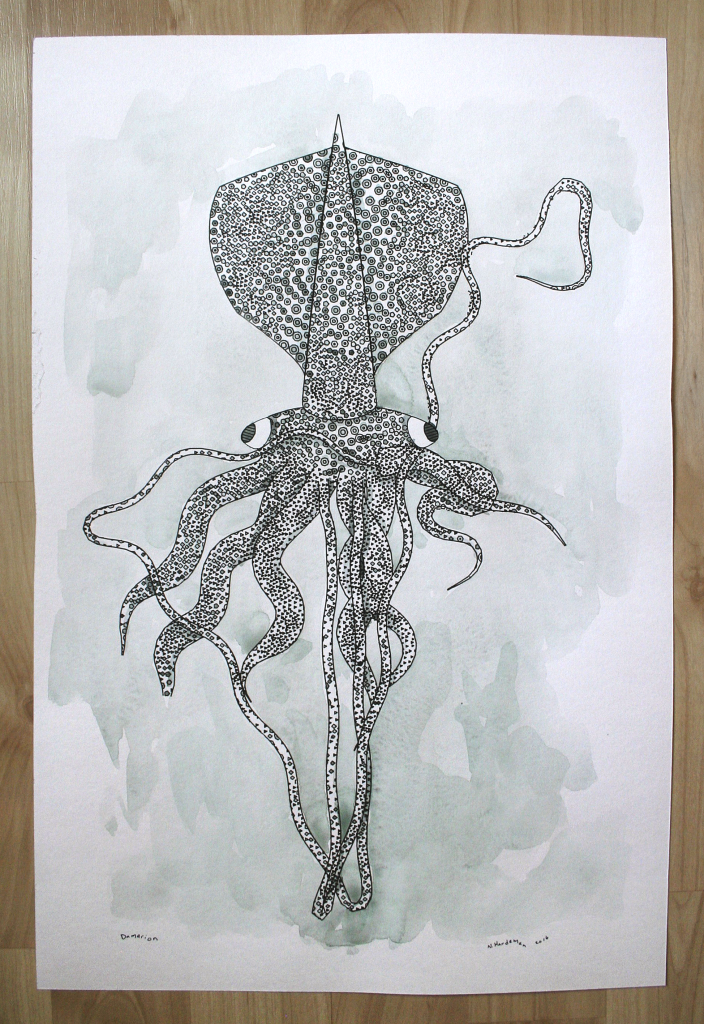
Just finished a Barracuda using the HP7475 pen plotter, some custom code and watercolor. I love that the output from my application will ultimately result in physical pen marks on a piece of watercolor paper. Available for purchase store.nickhardeman.com.
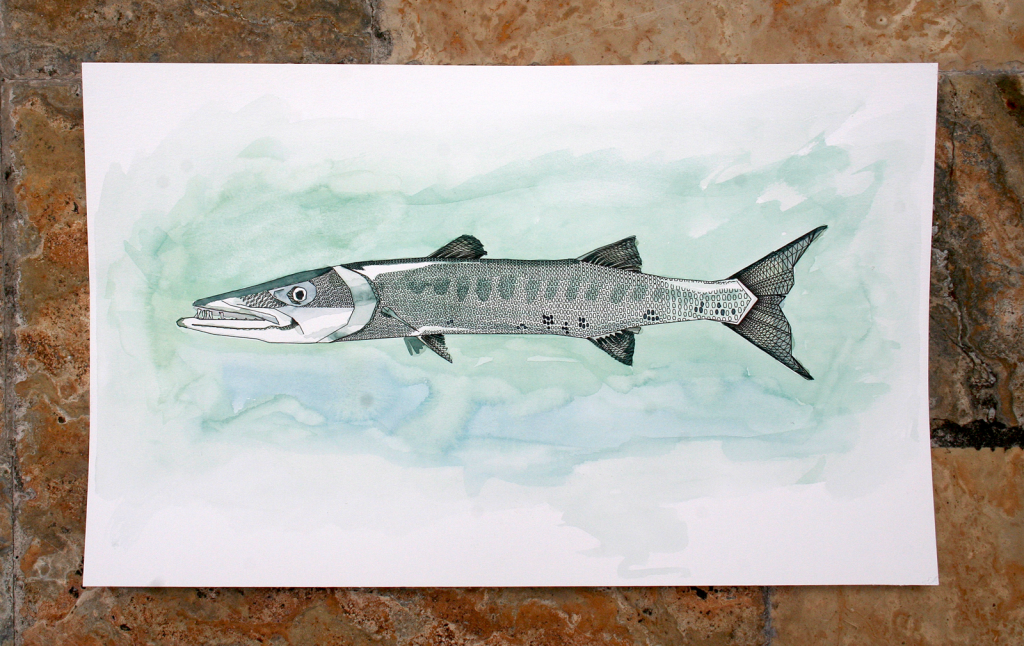
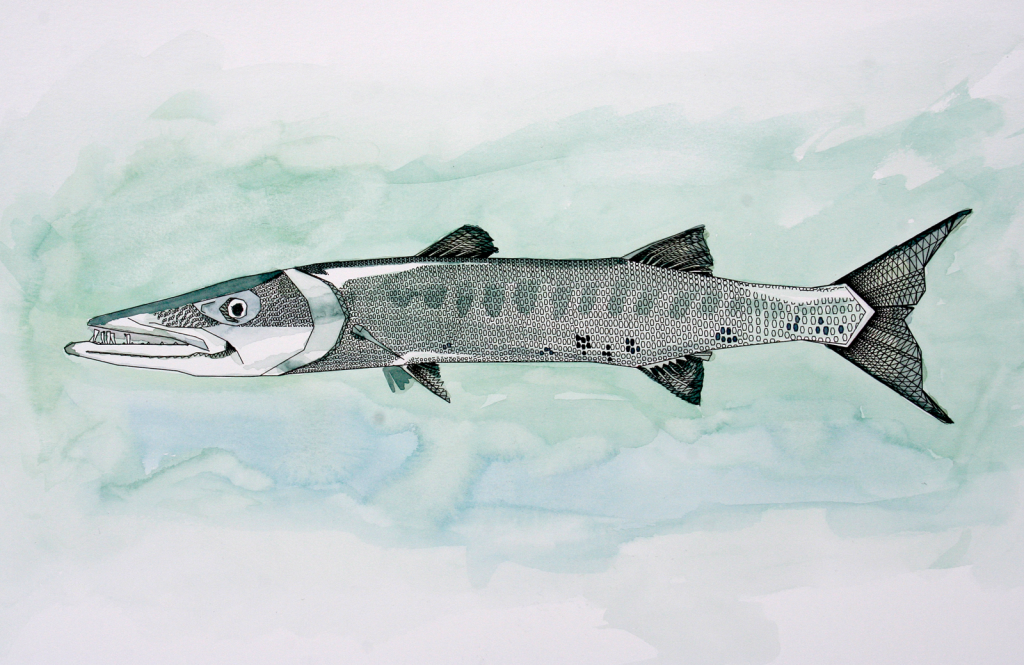
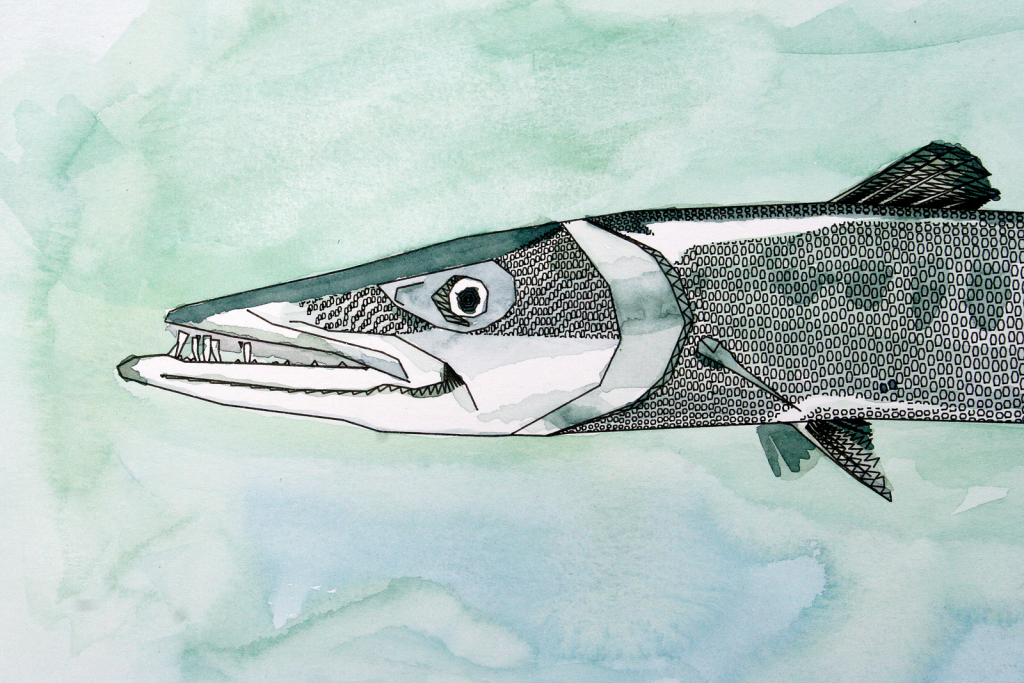


I recently purchased a HP7475 Pen Plotter from ebay for about $110 with shipping. I love that this printer uses physical pens that are dragged on paper to make marks. The marks have the inconsistencies that arise when drawing with a pen on paper and they are beautiful.
The first step was talking with the printer from my MacBook. This printer was initially released in 1983. Several people have detailed steps about sending printer commands from a modern computer.
http://notes.variogr.am/post/29262500593/1980s-pen-plotters-of-the-future
http://grandahl.net/feed/?p=19
http://www.tobiastoft.com/posts/an-intro-to-pen-plotters
Chiplotle!
The printer uses a language called HPGL that is rather straight forward. The above links provide several different ways to communicate with the printer. I want to use OpenFrameworks to communicate with the printer and the above methods seem overly complicated to achieve this. Add-on time!
The original manual is online and there is a cheat sheet for some of the printer commands.
I wrote ofxHPGL to communicate with the printer and it’s rather straightforward. The serial buffer on the printer is super tiny, so there is a sleep millis in there so that the buffer doesn’t overflow. If the printer starts acting weird, that is usually the issue.





























